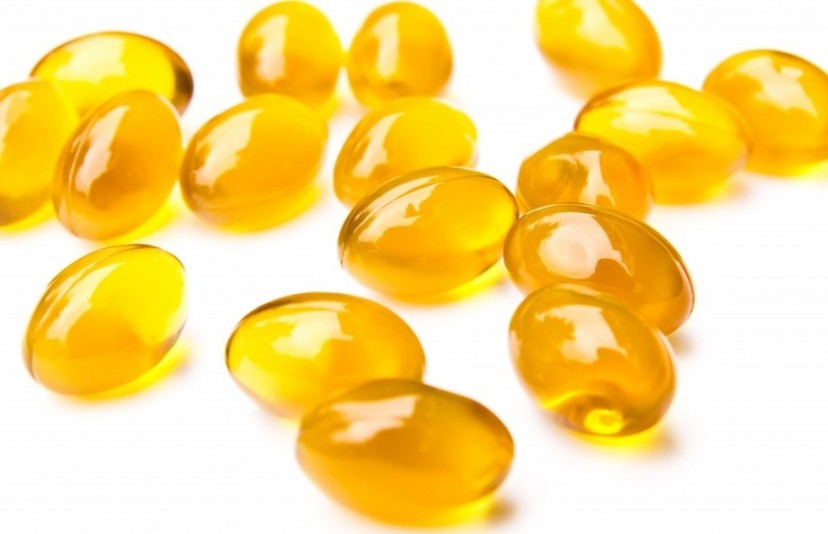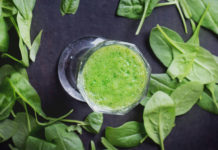In order to live a healthy lifestyle, many different factors come into play. One simple vitamin, nutrient, or exercise plan may not make a huge change. However, when you put all of the pieces together, it can make a big difference in the way you feel and the quality of life you live.
One key component to the mix is making sure you get enough vitamins and minerals. Vitamin D3 is one of these vitamins most important in preventing many diseases, and responsible for a variety of body functions. Understanding Vitamin D3 as a resource for the body can unveil just how essential it is for your wellbeing.
Vitamin D3 deficiency is a widespread problem, now recognized as a pandemic. According to The American Journal of Clinical Nutrition, most deficiency occurs because of the lack of exposure to the sun.
Having tested every new patient in my practice for Vitamin D3 deficiency over many years, I have found about 85% to be deficient. Many are already taking a multivitamin containing 400-800 IU of Vitamin D3 and are somewhat disappointed to find they are deficient. For most adults, 5,000 IUs of Vitamin D3 are needed daily to maintain normal serum blood levels. This is easily taken in one small capsule.
Very few foods have enough Vitamin D3 to satisfy the needs of the human body. Even foods that are fortified with Vitamin D3 are insufficient if taken alone. Scientific American reports that three-quarters of U.S. teens are deficient in Vitamin D3 with more prevalence happening each year.
There are many studies that suggest different amounts of vitamin D3 for healthy functioning. The Institute of Food and Agricultural Sciences reports the following recommendation:
——
Table 1.
Intake Recommendations for Vitamin D3
| Life Stage | Vitamin D (IU/day) | Vitamin D (mcg/day) |
| Children and Teens | 600 | 15 |
| Adults, up to age 70 | 600 | 15 |
| Adults, ages 71+ | 800 | 20 |
| Pregnant | 600 | 15 |
| Breastfeeding | 600 | 15 |
| On food and supplement labels, the amount of vitamin D may be given in International Units (IU) or micrograms (mcg). Since skin synthesis of vitamin D varies so much, the latest dietary recommendations assume minimal sun exposure. | ||
——
I believe the above recommendations are way too low and need to be updated! These doses will not, in my experience, maintain normal serum blood levels. Therapeutic serum levels are 40 ng/ml-100 ng/ml on a 25-D hydroxy lab test. Please be sure to have yours tested. It can easily be checked through DirectLabs.
Many other reliable sources suggest needing 5,000 IU/day. I agree with the 5,000 IU daily dose for most adults. This is the dose my family and I take each day. I have found this dose keeps virtually everyone in the therapeutic range.
Why Is Vitamin D3 Important?
Known as the sunshine vitamin for its ability to produce in the skin from the sun’s rays, Vitamin D3 can affect over 2,000 genes in the body. Vitamin D3 is vital for regulating absorption of calcium and phosphorous, and also assists in the regulation of immune system function.
Best known for keeping bones healthy; without enough of it, the body can only absorb up to 10% of dietary calcium, much less than the healthy absorption rate of 30-40%. Without proper absorption of calcium, rickets can occur in children, osteoporosis in adults, and other diseases such as diabetes. Many body tissues contain vitamin D3 receptors that help organs, muscles, and blood vessels (including the heart) absorb vitamin D3.
As mentioned before, dietary vitamin D3 is not enough to supply the body with a healthy amount for all the processes it needs. The sun plays an essential part in the human body’s creation of vitamin D3 and without enough exposure, deficiency can occur.
When the shift from working out in the sunlit fields of farming changed to office jobs that rarely get a chance to catch some rays, sun exposure became a coveted prize.
As pigmentation also decreases the amount of vitamin D3 production in skin by over 90%, non-whites are at a particularly high risk for deficiency even if they get enough sun exposure.

Another main contributor to lack of absorption of UVB (good) rays that help produce Vitamin D3 is the high risk of skin damage and increased use of sunscreen. This is an example of unforeseen problems from a wise choice, as sunscreen blocks both UVA (bad) and UVB (good) rays from reaching the skin. Harmful UVA rays can increase skin damage and ultimately lead to a heightened risk of skin cancer if skin is left exposed too long to the sun. Optimal sun exposure to raise Vitamin D3 levels is only 10-20 minutes, 3-4 times a week. The best time of day is between 10:00 A.M and 2:00 P.M.
Despite all of this, there are healthy and effective ways to increase vitamin D3 in your body without risking skin cancer or skin damage such as premature wrinkling or photo damage.
Ways To Increase Vitamin D3
Get Outside
The best way to increase vitamin D3 is to get some exposure to the Earth’s most viable resource: the sun. The amount of UVB rays that are available varies by season and region, however the subtropics and tropical countries are the only regions where UVB rays are accessible year-round. Therefore, in order to get the most from the sun as possible, try to spend the summer and spring months outdoors, when the UVB rays are available. You don’t need to spend a prolonged time period out in the sunshine, just 10 minutes of mid-day sun exposure is all you need 3-4 times a week.
Other options for regions where UVB rays are scarce is to invest in a solar lamp. These lamps have been known to help increase mood and seasonal depression associated with lack of vitamin D3.
Remember, it is wise to use sunscreen and protective clothing when exposing skin to the sun for long periods of time, especially where the strength of the sun is much higher (ie. tropical regions). Even though sun exposure is important, protecting your skin cells from damage is also key to limiting your risk of cancer.
Eat A Well-Balanced Diet
As explained earlier, no one food will be able to solve a vitamin D3 deficiency; and most foods do not have enough vitamin D3 to maintain the therapeutic amounts that the body needs for proper function. Some foods can help offset the vitamin D3 needed in the body. The National Institutes of Health reports that fatty fish such as tuna and salmon have naturally occurring vitamin D3 and are some of the best natural sources. Mushrooms, beef liver, cheese, and egg yolks also have small amounts of the vitamin. However, fortified foods pack a much bigger punch. Almost all of the United States milk supply is fortified with 100 IU/cup. The following table includes food sources of Vitamin D3 from the NIH.
Although I disagree with the listed daily values (DV), the list below is a good reference for food sources of Vitamin D3:
——
| Selected Food Sources of Vitamin D [11] | ||
| Food | IUs per serving* | Percent DV** |
| Cod liver oil, 1 tablespoon | 1,360 | 340 |
| Swordfish, cooked, 3 ounces | 566 | 142 |
| Salmon (sockeye), cooked, 3 ounces | 447 | 112 |
| Tuna fish, canned in water, drained, 3 ounces | 154 | 39 |
| Orange juice fortified with vitamin D, 1 cup (check product labels, as amount of added vitamin D varies) | 137 | 34 |
| Milk, nonfat, reduced fat, and whole, vitamin D-fortified, 1 cup | 115-124 | 29-31 |
| Yogurt, fortified with 20% of the DV for vitamin D, 6 ounces (more heavily fortified yogurts provide more of the DV) | 80 | 20 |
| Sardines, canned in oil, drained, 2 sardines | 46 | 12 |
| Liver, beef, cooked, 3 ounces | 42 | 11 |
| Egg, 1 large (vitamin D is found in yolk) | 41 | 10 |
| Ready-to-eat cereal, fortified with 10% of the DV for vitamin D, 0.75-1 cup (more heavily fortified cereals might provide more of the DV) | 40 | 10 |
| Cheese, Swiss, 1 ounce | 6 | 2 |
* IUs = International Units.
** DV = Daily Value. DVs were developed by the U.S. Food and Drug Administration to help consumers compare the nutrient contents among products within the context of a total daily diet.
——
What Is The Best Vitamin D3 Supplement Program?
When diet and sun cannot provide enough for our bodies, supplemental vitamins can become a very effective mechanism to getting the right amounts of Vitamin D3. Many supplements are available that can help normalize serum Vitamin D3. I recommend our Professional Grade Diamond Nutritionals’ Vitamin D3 5,000. The suggested dose is one a day.
A professional grade multi-vitamin and mineral formula can also go a long way towards improving health. Remember that vitamins and minerals work together in the body as a team, not in isolation. As a result, I suggest Diamond Nutritionals’ Foundation Vitamin Formula which has many essential vitamins and minerals that play beneficial roles in the prevention of poor health. The suggested dose is three once a day.
Can You Get Too Much Vitamin D3?
Even though most individuals are deficient in vitamin D3, it is possible to get too much through supplementation, although this is unlikely. I have patients who regularly take 10,000 IU daily, and their serum blood levels average 80-90 ng/ml. I have never had a lab test come back too high (over 100ng/ml).
Remember to always consult a doctor prior to taking supplements for conditions that are self-diagnosed.








